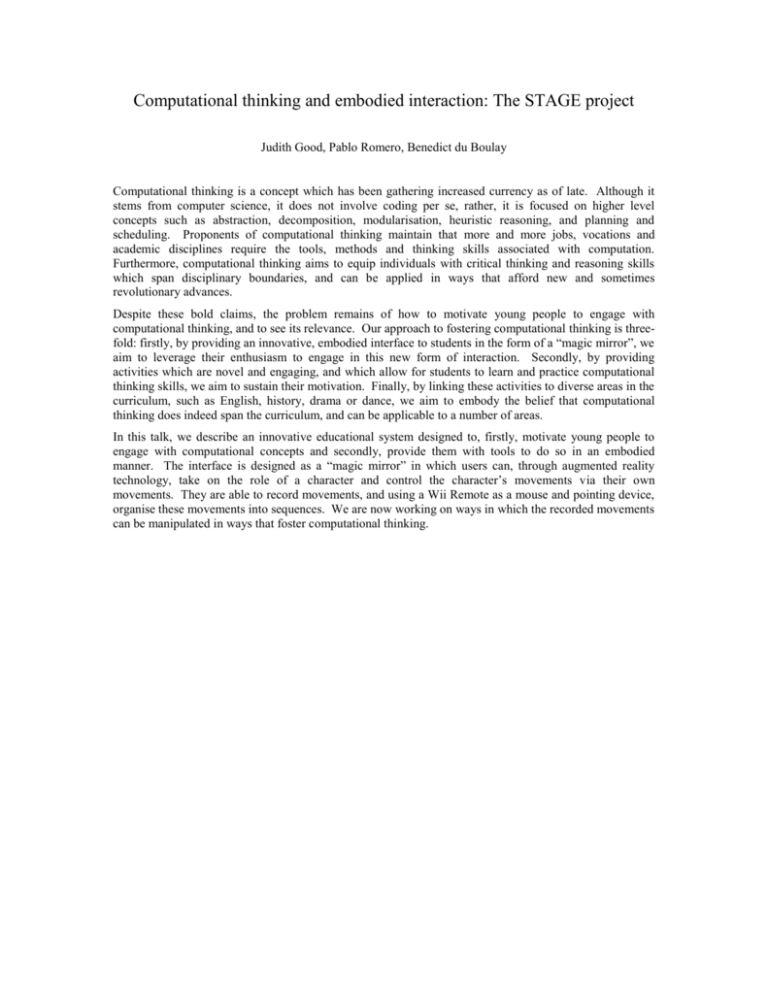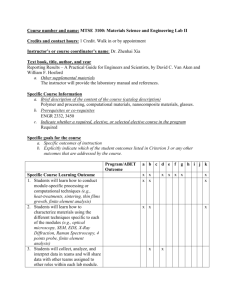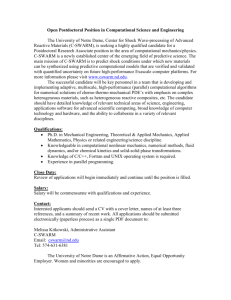Computational thinking and embodied interaction: The STAGE project
advertisement

Computational thinking and embodied interaction: The STAGE project Judith Good, Pablo Romero, Benedict du Boulay Computational thinking is a concept which has been gathering increased currency as of late. Although it stems from computer science, it does not involve coding per se, rather, it is focused on higher level concepts such as abstraction, decomposition, modularisation, heuristic reasoning, and planning and scheduling. Proponents of computational thinking maintain that more and more jobs, vocations and academic disciplines require the tools, methods and thinking skills associated with computation. Furthermore, computational thinking aims to equip individuals with critical thinking and reasoning skills which span disciplinary boundaries, and can be applied in ways that afford new and sometimes revolutionary advances. Despite these bold claims, the problem remains of how to motivate young people to engage with computational thinking, and to see its relevance. Our approach to fostering computational thinking is threefold: firstly, by providing an innovative, embodied interface to students in the form of a “magic mirror”, we aim to leverage their enthusiasm to engage in this new form of interaction. Secondly, by providing activities which are novel and engaging, and which allow for students to learn and practice computational thinking skills, we aim to sustain their motivation. Finally, by linking these activities to diverse areas in the curriculum, such as English, history, drama or dance, we aim to embody the belief that computational thinking does indeed span the curriculum, and can be applicable to a number of areas. In this talk, we describe an innovative educational system designed to, firstly, motivate young people to engage with computational concepts and secondly, provide them with tools to do so in an embodied manner. The interface is designed as a “magic mirror” in which users can, through augmented reality technology, take on the role of a character and control the character’s movements via their own movements. They are able to record movements, and using a Wii Remote as a mouse and pointing device, organise these movements into sequences. We are now working on ways in which the recorded movements can be manipulated in ways that foster computational thinking.








